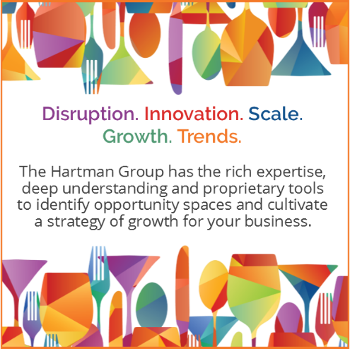Laying a string of world-class pearls: folly or fortune?
 Food and beverage company leaders newer to the premium marketplace are often very skeptical of investing in multiple early-stage brands, referring to it as a desperate “string-of-pearls” strategy. It is an opinion that presumes there is no way to enhance one’s pearl-laying skills, that most early-stage brands fail, that all of this amounts to corporate gambling. Conventional thinking says that big companies should focus only on tucking in mature businesses.
Food and beverage company leaders newer to the premium marketplace are often very skeptical of investing in multiple early-stage brands, referring to it as a desperate “string-of-pearls” strategy. It is an opinion that presumes there is no way to enhance one’s pearl-laying skills, that most early-stage brands fail, that all of this amounts to corporate gambling. Conventional thinking says that big companies should focus only on tucking in mature businesses.
We disagree. Here’s why.
Pearl farming is a centuries-old art in China and Japan. Those who do it know exactly how to sustain a reliable production of differing sizes using well-honed techniques and cultivated species of shellfish. In business, a string-of-pearls transaction is finely crafted to target a company’s strategic focus on specific growth areas. And like pearl farming, it is an art that requires finely tuned techniques and informed selection of those growth areas.
In the world of investing in early-stage premium brands, the issue is not should you invest in multiple brands just to ensure one succeeds but rather: do you know what makes early-stage brands scale past the $100M mark and keep growing? Only the answer to this question will empower you to make smarter acquisitions. And if you can foresee this early in the brand’s growth, you can be an early investor, eliminating the VC middleman.
Do you know what makes early-stage brands scale and what cultivates continued growth?
For many leaders the answer is “no.” And this is why investing in this part of the life cycle feels like gambling. Yet in the past five years, the sheer number of premium early-stage brands that have crossed the $1M threshold has surprised even us. There is now a statistically valid sample across the store with which to rigorously analyze for various causal variables. But you also have to focus on the right variables. The less one knows about niche marketing, emerging premium benefits and the shifting landscape of distribution, the more the whole early-stage premium space looks baffling — and risky.
 While legacy brand line extensions fail at a faster rate than early-stage premium brands in most categories, they are often cheaper to launch than the acquisition costs of early-stage brands, where multiples now routinely run 8-10x in hot categories, largely due to the VC-middleman effect.
While legacy brand line extensions fail at a faster rate than early-stage premium brands in most categories, they are often cheaper to launch than the acquisition costs of early-stage brands, where multiples now routinely run 8-10x in hot categories, largely due to the VC-middleman effect.
Yet if one is a smart acquirer, getting 5-6 small brands up to $300M over a longer time than 5-6 Big Bet line extensions is far more likely to provide you with continued $300M+ revenue for each of your investments than the 5-6 line extensions that historical data reveals will never keep growing and will usually decline severely or get delisted.
Smart early-stage M&A is about going premium and garnering long-term ROI and incremental profits. The key is to pick well. Far too often, we see clients look for:
- fast topline growth (without looking deeper at how it was achieved)
- $50M-$100M in scale (this is considered risky and progressive enough)
- a super-mainstreamable product proposition (e.g., popchips, Pirate’s Booty)
The result is a premium brand that stalls because it was not disruptive enough to sustain growing demand and interest. Maybe it was disruptive 15 years ago, but not today. No amount of clever field marketing will keep it growing.
What the industry needs now more than ever is a way to isolate the smaller, fast growers who are mathematically and intuitively on track to accomplish what KIND and SkinnyPop have recently done.
Over the past three years, The Hartman Group has spent considerable time studying random samples of early-stage brands at different revenue hurdles and researching what go-to-market best practices are shared among various classes of successful brands. Our analysis reveals that, while there are multiple routes to scale, product design, in the historical context of a specific operating category, is perhaps the most underdiscussed predictor of long-term growth past $100M. They key, we believe, is to understand which early-stage players have stumbled onto blinding white spaces for underserved innovation and invest in them early on.
PREMIUM M&A: Our proprietary tools that focus on long-term growth and health, not short-term gains
